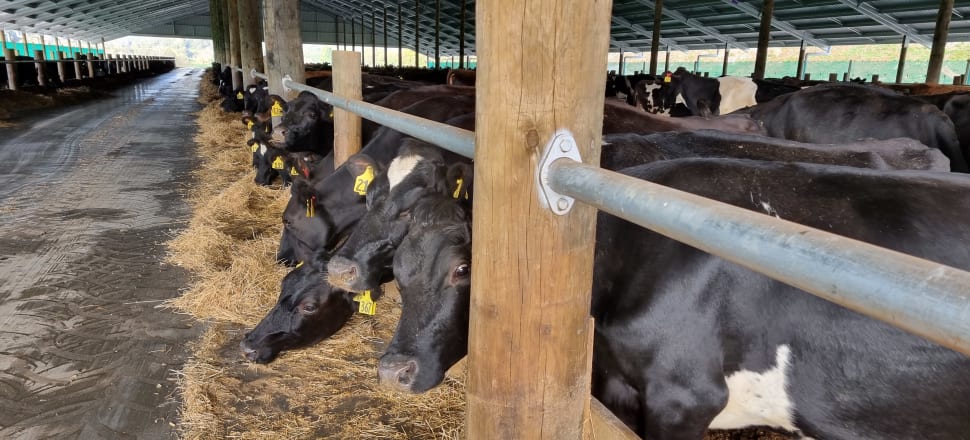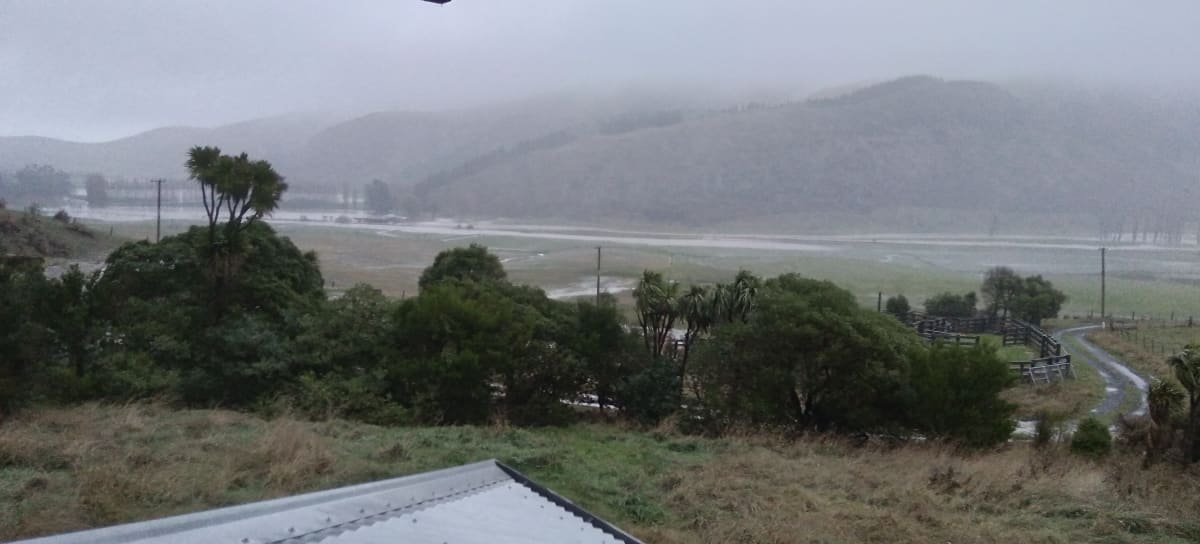
Canterbury’s regional council report confirms flooding was the key issue for a planned cattle feedlot
A week before the withdrawal of a plan to build a cattle feedlot in a tiny Canterbury valley, a council officer’s report landed – with a thud.
Wongan Hills Ltd, which owns a sprawling 4100ha property, Willesden Farms, applied for consents to build four massive composting feed barns in Kaituna Valley, 3.4km from Te Waihora/Lake Ellesmere.
READ MORE: * ‘It is a win’: Feedlot consents withdrawn * Flood risk casts shadow over feedlot plans
The council report distilled the potential effects, outlined concerns raised in submissions, detailed the legal and planning hoops the project must jump through, and made a recommendation. The consents could be granted, Nicola Duke, senior consents planner with Canterbury’s regional council, ECan, said in her May 30 report – but only if concerns about flood risk were adequately addressed.
The conclusion relied on expert advice from natural hazards scientist Michelle Wild, of ECan.
On June 6, ECan notified submitters that Wongan Hills had withdrawn its consent applications.
It’s no surprise flooding emerged as a key concern.
Last year, Duke recommended Wongan Hills’ consents – to establish and operate the feedlot and discharge to air – be given limited notification, but she was overruled by her managers, who preferred public notification.
“We are concerned that there is potential for water ingress into the barns,” the notification decision said.
Before a hearing scheduled for July, 128 submissions were received – 125 were opposed, and three neither supported nor opposed. More than half specifically mentioned flooding.
Tomm Stanley, a Kaituna Valley resident and member of environmental group Little River Eco Collective, said flooding there is common knowledge.
“Over the [previous] weekend, the valley was flooded to the point cars could not get in or out – even four-wheel drives were blocked.”
He adds: “Over half of that paddock area, in proximity to where those sheds were going to be, was flooded.”
Wongan Hills director Brent Thomas did not respond to a request for comment.
ECan released Duke’s report after an official information request.
David Perenara-O’Connell, ECan’s acting operations director, said the report was the planner’s advice to hearing commissioners.
“It was due to be published and circulated to all parties involved in the hearing. However, the application was withdrawn by the applicant shortly before this was due to occur.
“The consent planner’s advice is not binding on the decision-makers, as they also need to hear from the applicant and submitters before making a decision on whether to grant or refuse consent.”

Each of the Wongan HIlls barns was proposed to be 20m wide and about 240m long, housing up to 2200 cattle, in total, 24 hours a day.
The plan was for cattle to arrive at the barn at 500kg live weight, and leave at 650-700kg live weight, with a residence time of between 120 and 150 days.
The barns would have contained an 800mm layer of high-carbon plant material, which is transformed into compost through animals’ nitrogen-rich urine and dung.
Daily tilling ensures it’s aerated, and reduces temperature, a system that produces “limited to nil” odour. The compost material would be spread on Wongan Hills farm, a permitted activity.
Duke’s report considered a variety of potential effects, including odour, effects on groundwater and surface water quality and ecosystems, and tangata whenua values.
Submitters – including Wairewa Rūnanga, the Canterbury Aoraki Conservation Board and Little River Eco Collective – mentioned a variety of concerns, including animal welfare, and climate change.
A cultural assessment by Mahaanui Kurataio Ltd, provided to ECan in October last year, said water quality in the Kaituna River and Te Waihora/Lake Ellesmere was not at a standard that provided for cultural wellbeing. A discharge of contaminants to water would be “culturally and spiritually affronting to the mauri [life force] of the water, and could compound the cumulative effects on the catchment”.
Wairewa Rūnanga said Wongan Hills’ flood modelling was uncertain, and Kaituna Valley was experiencing the effects of climate change, with more frequent flooding on the lowlands surrounding the proposed barn site. If the barns were flooded, nutrients and solids could be carried into the Kaituna River and Te Waihora.
“The information provided has not satisfied the concerns held by their kaitiakitanga [guardianship] representatives on the inherent uncertainty and potential risks to waterways from the proposed system.”
Duke said in her report the potential effects could largely be managed by consent conditions, but there were uncertainties about flooding.
“Inundation of the barns would result in significantly detrimental effects both localised as a result of a failure of the aerobic composting, but more significantly in a catchment context it would result in composting material and cattle effluent entering water in a catchment which is already significantly degraded.
“This is the key issue in contention for the proposal – all other conclusions around effects pivot on whether or not the barns are able to be operated effectively in a manner that is resilient to flooding and water ingress.”
Wild, ECan’s natural hazards scientist, reviewed modelling done by Aqualinc, on behalf of Wongan Hills.
She concluded there were two potential flood sources, “both of which have been inadequately designed for”: Kaituna River flood flows and flows from a swale behind the first proposed barn, funnelling flows from a small hill above.
“Both sources of inundation could feasibly be mitigated with suitable design, supported by appropriate analysis. However, based on the current proposal and analysis, I consider that inundation, filling, and flow through the barns is possible.”
Duke’s report said the probability of inundation was uncertain, and flooding of the barns wasn’t a situation Wongan Hills would want to occur, as it would amount to an unconsented discharge.
“Furthermore, the potential impact on property, including stock value, animal welfare, and the amount of work required to reinstate any flooded barns will mean this is a situation that is clearly desirable for them to avoid.”
That said, Duke’s recommendation was, given the uncertainty about flooding, “I am not in the position to comfortably recommend the consents be granted, or refused”.
Some farmers are embracing composting barns, for example West Coast dairy farmers Matt and Carmel O’Regan, who told Newsroom last year: “The cows are in the best condition ever pre-calving and we’ve used about 20 percent less feed because there’s no waste compared with feeding out.”
Animal rights charity Save Animals From Exploitation made a submission on the Kaituna Valley feedlot proposal, which was signed by 6145 animal advocates.
The group’s campaign manager, Emma Brodie, said intensive indoor farming practices are more dangerous than extensive systems. She points to a recent barn fire at a Waikato egg farm in which more than 50,000 hens were killed.
“We are relieved that the company pulled the application, which spared over 2000 cows from the dangers and risks of feedlot farming.”







